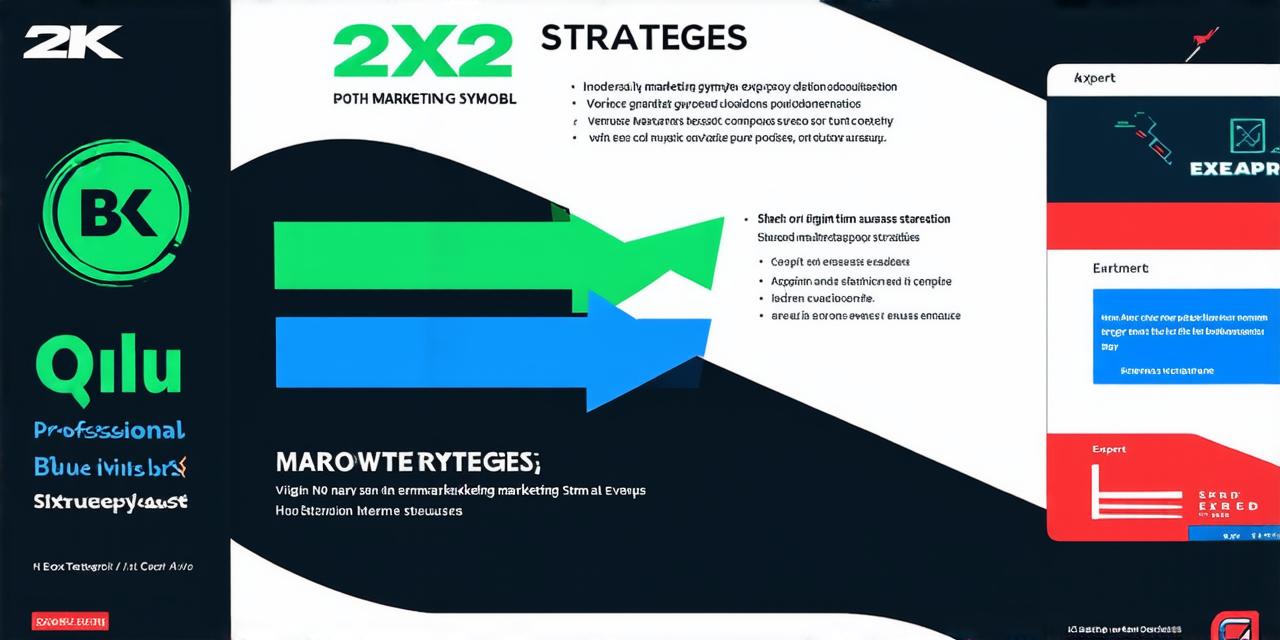In today’s digital age, having an online presence is crucial for businesses of all sizes. With billions of people accessing the internet every day, it’s important to have a clear understanding of digital marketing strategies to reach your target audience effectively.
Chapter 1: Search Engine Optimization (SEO)
Search engine optimization is the process of optimizing a website to rank higher in search engine results pages. The ultimate goal of SEO is to attract organic traffic to your website by improving your online visibility.
Here are some expert tips to help you improve your SEO:
- Conduct keyword research to identify high-traffic and low-competition keywords that are relevant to your business. Use long-tail keywords to target niche audiences.
- Optimize your website’s content, including meta tags, headings, and descriptions, to include your target keywords. Focus on creating high-quality content that provides value to your audience.
- Build high-quality backlinks from authoritative websites in your industry. Avoid buying or using low-quality links as they can harm your SEO.
- Monitor your website’s performance regularly and make necessary changes to improve your ranking. Use analytics tools to track your website’s traffic, bounce rate, and conversion rate.
Example: A small online retailer specializing in niche products can use long-tail keywords related to their products, such as “handmade wooden jewelry,” to target customers searching for those specific items. By optimizing their website’s content and building backlinks from authoritative websites in the handmade goods industry, they can improve their visibility on search engines and attract more organic traffic to their site.
Chapter 2: Social Media Marketing
Social media marketing involves using social media platforms, such as Facebook, Twitter, Instagram, and LinkedIn, to promote your business and engage with your audience. Here are some expert tips to help you maximize your social media efforts:
- Define your target audience and choose the social media platforms that they use most frequently. For instance, if your target audience is millennials, Instagram or TikTok might be more effective than LinkedIn.
- Create a content calendar to plan and schedule your posts in advance. This will help you maintain a consistent posting schedule and ensure that you’re always publishing relevant content.
- Use visuals, such as images and videos, to make your posts more engaging and shareable. People are more likely to engage with posts that have high-quality visuals.
- Monitor your social media metrics regularly to measure your performance and adjust your strategy accordingly. Use analytics tools to track your followers, engagement rate, and click-through rate.
Example: A fitness studio can use Instagram to showcase their classes and workouts, targeting people who are interested in health and wellness. By creating visually appealing posts and partnering with fitness influencers on the platform, they can reach a wider audience and attract more clients to their studio. They can also use social media advertising to promote their classes or events to specific audiences.
Chapter 3: Content Marketing
Content marketing involves creating valuable content, such as blog posts, videos, infographics, and podcasts, to engage with your target audience and drive traffic to your website. Here are some expert tips to help you succeed with content marketing:
- Define your target audience and create content that speaks directly to their needs and interests. This will help you establish yourself as an authority in your industry and build trust with your audience.
- Use a variety of content formats, such as blog posts, videos, infographics, and podcasts, to engage with different types of learners and keep your content fresh.
- Optimize your content for search engines by using relevant keywords, adding alt tags to images, and creating shareable content. This will help you improve your website’s visibility on search engines.
- Promote your content through social media, email marketing, and other channels to reach a wider audience. Use calls-to-action (CTAs) in your content to encourage readers to take action, such as subscribing to your newsletter or downloading an ebook.
Example: A software company can create blog posts that provide tips and solutions for businesses looking to improve their productivity and efficiency. They can also create videos demonstrating how to use their products and share them on social media platforms. By optimizing their content for search engines and promoting it through various channels, they can attract more visitors to their website and generate leads for their sales team.
Chapter 4: Email Marketing

Email marketing involves sending targeted emails to subscribers with the goal of driving traffic to your website, increasing engagement, or promoting your products or services. Here are some expert tips to help you succeed with email marketing:
- Build a list of subscribers who have opted in to receive your emails and use double opt-in (DOI) to ensure that they want to receive your content.
- Segment your email list based on factors such as past purchases, interests, and behavior to create targeted campaigns that resonate with each group.
- Use a clear call-to-action (CTA) in your emails, such as “buy now” or “sign up for our newsletter,” to encourage readers to take action.
- Use personalization techniques, such as including the recipient’s name or previous purchases in your email content, to make them feel valued and more likely to engage with your message.
Example: A clothing retailer can send targeted emails to subscribers with discounts on their latest collection or promotions for upcoming sales events. They can also use email marketing to promote their loyalty program and encourage repeat purchases from existing customers. By segmenting their email list and using personalization techniques, they can increase the chances of conversion and build long-term customer relationships.
Chapter 5: Pay-Per-Click (PPC) Advertising
Pay-per-click advertising involves placing ads on search engine results pages or social media platforms and paying each time someone clicks on the ad. Here are some expert tips to help you succeed with PPC advertising:
- Define your target audience and create targeted ads that speak directly to them. Use ad extensions, such as callouts, sitelinks, and call tracking, to increase engagement and conversion rates.
- Use relevant keywords in your ad copy and landing pages to improve your ad relevance and quality score. Avoid using irrelevant or broad keywords that don’t match your target audience’s interests.
- Monitor your ad performance regularly and adjust your bids and keywords to improve your ROI. Use A/B testing to optimize your ad copy, images, and calls-to-action (CTAs) for better results.
- Use retargeting to reach people who have previously interacted with your brand and encourage them to take action. This can be particularly effective when combined with email marketing campaigns.
Example: A travel agency can use PPC advertising to promote their latest vacation packages, targeting people searching for travel deals on search engines and social media platforms. By using ad extensions and retargeting, they can increase the chances of conversion and drive more sales to their business. They can also use PPC advertising to promote specific destinations or events to targeted audiences who are interested in traveling.
Summary:
In conclusion, digital marketing strategies are essential for businesses looking to reach their target audience online. By implementing the tips and best practices outlined in this guide, you can improve your website’s visibility, engage with your audience on social media, educate them with valuable content, and drive more sales through email marketing and PPC advertising. Remember, the key to success is to stay informed, experiment with different strategies, and adapt to changing trends in the digital landscape.



